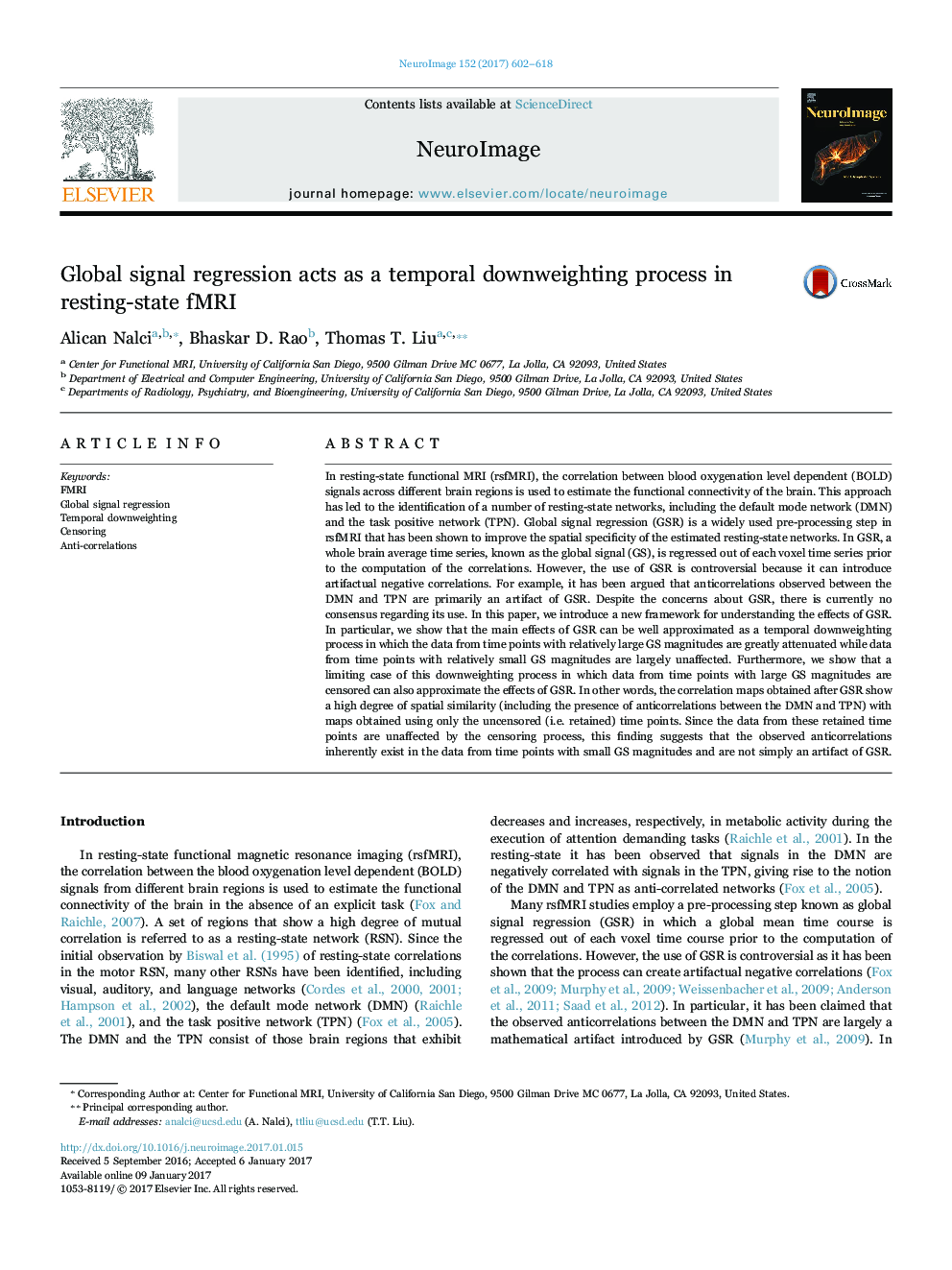| Article ID | Journal | Published Year | Pages | File Type |
|---|---|---|---|---|
| 5631221 | NeuroImage | 2017 | 17 Pages |
â¢GSR can be approximated as a temporal downweighting process.â¢GSR attenuates the data from time points with large GS amplitudes.â¢GSR can be further approximated as a temporal censoring process.â¢Anti-correlations between the DMN and the TPN inherently exist in the fMRI data.
In resting-state functional MRI (rsfMRI), the correlation between blood oxygenation level dependent (BOLD) signals across different brain regions is used to estimate the functional connectivity of the brain. This approach has led to the identification of a number of resting-state networks, including the default mode network (DMN) and the task positive network (TPN). Global signal regression (GSR) is a widely used pre-processing step in rsfMRI that has been shown to improve the spatial specificity of the estimated resting-state networks. In GSR, a whole brain average time series, known as the global signal (GS), is regressed out of each voxel time series prior to the computation of the correlations. However, the use of GSR is controversial because it can introduce artifactual negative correlations. For example, it has been argued that anticorrelations observed between the DMN and TPN are primarily an artifact of GSR. Despite the concerns about GSR, there is currently no consensus regarding its use. In this paper, we introduce a new framework for understanding the effects of GSR. In particular, we show that the main effects of GSR can be well approximated as a temporal downweighting process in which the data from time points with relatively large GS magnitudes are greatly attenuated while data from time points with relatively small GS magnitudes are largely unaffected. Furthermore, we show that a limiting case of this downweighting process in which data from time points with large GS magnitudes are censored can also approximate the effects of GSR. In other words, the correlation maps obtained after GSR show a high degree of spatial similarity (including the presence of anticorrelations between the DMN and TPN) with maps obtained using only the uncensored (i.e. retained) time points. Since the data from these retained time points are unaffected by the censoring process, this finding suggests that the observed anticorrelations inherently exist in the data from time points with small GS magnitudes and are not simply an artifact of GSR.
